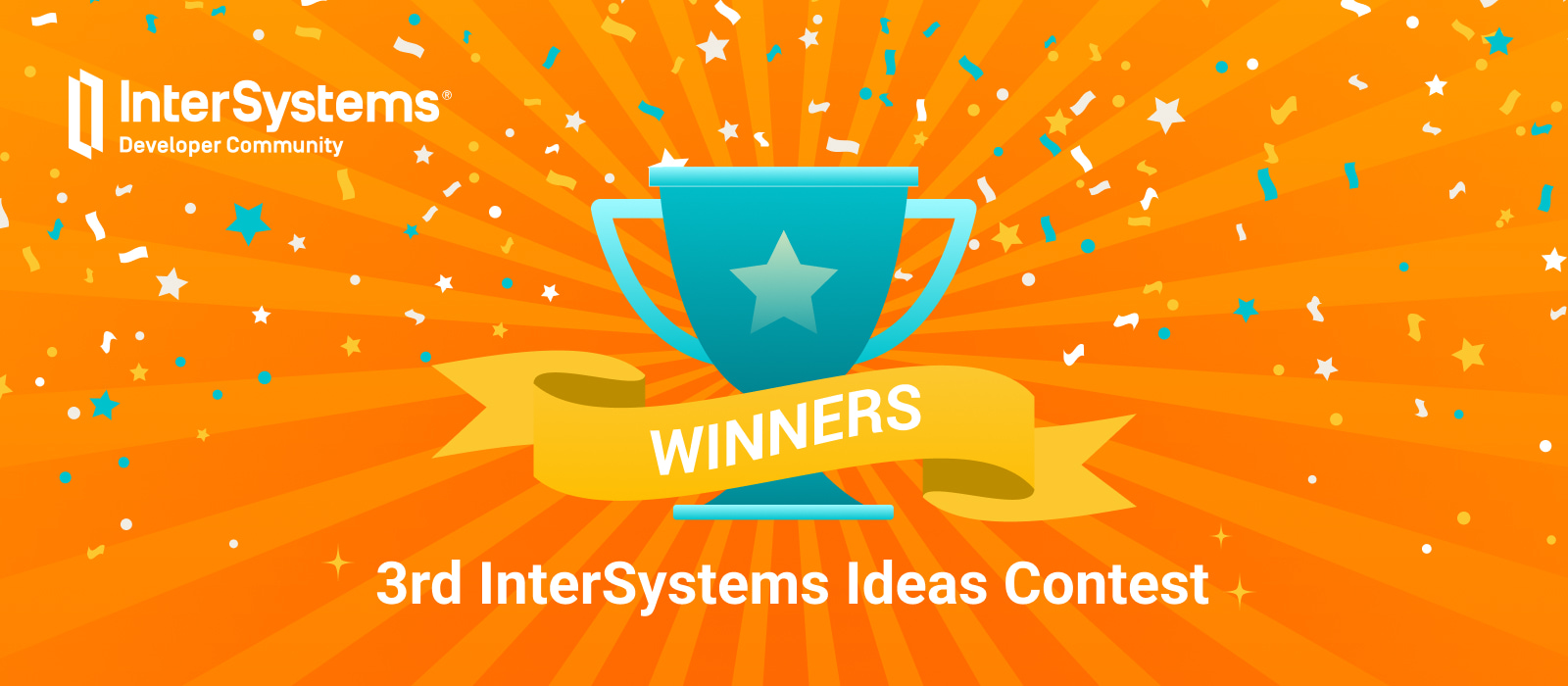¡Hola Comunidad!
Nuestro 💡 3er Concurso de Ideas de InterSystems ha llegado a su fin. Como resultado, ¡hay 🔥 30 nuevas ideas! Todas ellas se centran en mejorar InterSystems IRIS y los productos y servicios relacionados, destacando los beneficios tangibles para los desarrolladores una vez implementadas las ideas.
Y ahora anunciamos los ganadores...

Nominación de los expertos
🥇 El 1er puesto es para la idea Añadir un depurador para Python embebido en Visual Studio Code de @Pietro Di Leo
El ganador recibirá🎁 Auriculares inalámbricos con cancelación de ruido JBL Tour Pro.
🥈 El 2do puesto es para la idea Distributed Work Manager de @Alexey Maslov
El ganador recibirá🎁 Patagonia Unisex Nano Puff® Vest.
🥉 El 3er puesto es para la idea IPM (ZPM) extension para VS Code de @John Murray
El ganador recibirá🎁 LEGO Vespa 125 / Corvette / NASA Mars Rover Perseverance / Motocicleta Kawasaki Ninja H2R.
Descubrimos que 2 ideas estaban muy por delante del resto en cuanto a número de votos, y que la segunda idea estaba sólo 1 voto por detrás del líder. Para mostrar nuestro agradecimiento a los participantes, hemos decidido ampliar nuestra nominación comunitaria y premiar las 2 ideas más votadas. Por lo tanto, esta vez el premio de la comunidad es para
🌟 La idea Añadir un depurador para Python embebido en Visual Studio Code por @Pietro Di Leo
El ganador recibirá🎁 LEGO Vespa 125 / Corvette / NASA Mars Rover Perseverance / Motocicleta Kawasaki Ninja H2R.
y...
🌟La idea IPM (ZPM) extensión para VS Code por @John Murray
El ganador recibirá🎁 LEGO Vespa 125 / Corvette / NASA Mars Rover Perseverance / Motocicleta Kawasaki Ninja H2R.
🔥 Además, todos los participantes en el 3er Concurso de Ideas recibirán un regalo especial: una camiseta de marca con el logotipo de InterSystems (unisex)
Echemos un vistazo a los participantes y sus brillantes ideas
¡NUESTRA ENHORABUENA A TODOS LOS GANADORES Y PARTICIPANTES!
Gracias por vuestra atención al Concurso de Ideas y por el esfuerzo que dedicas al portal oficial de comentarios de InterSystems 💥
Nota importante: Los premios ya están en producción. Nos pondremos en contacto con todos los participantes cuando estén listos para su envío.

.png)
